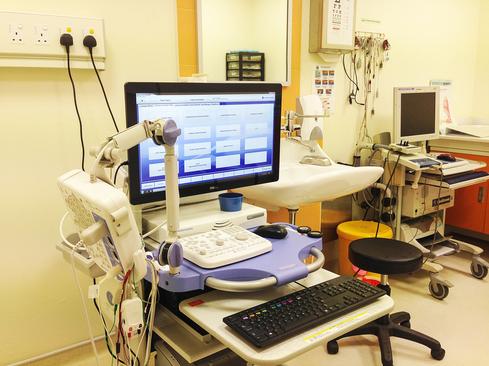Fictional Grey Sloan Memorial Hospital is locked out of its electronic medical records, but in the real world, healthcare organizations face even greater risks.

Like many couples, my wife and I enjoy watching TV dramas together. However, the recent winter finale of the long-running Grey's Anatomy really hit home. It was about how the debilitating effects of a ransomware attack could leave a hospital and its patients at the mercy of attackers.
Natalie, my wife, is a pediatric intensivist (a doctor who works at an intensive care unit for children) and the chief medical information officer at Stanford Children's Hospital. I am the chief risk officer and chief security officer at Neustar, a company that is responsible for Internet and telecommunication services, as well as solutions that prevent and mitigate the types of attacks depicted in Grey's Anatomy.
Spoiler Alert!
Can hospitals really be taken offline, leaving critical support systems vulnerable and completely exposed to malicious actors? Or is this typical television hyperbole?
The harsh reality is that the producers of Grey's Anatomy did their research and delivered a dramatized description of a threat that multiple different types of businesses, including healthcare organizations, have come to know all too well. We saw a real-life example of the potential danger with the WannaCry ransomware attack that crippled a hospital in the UK last May. No one is immune to ransomware attacks, but you can fend them off, defend your critical infrastructure, and prepare for emergencies like this through preventive measures and training.
As a CMIO and CRO/CSO couple, we both immediately thought about the extensive work our organizations undertake to prevent these types of attacks and to mitigate the effects if they happen. Proper patch management is key to preventing known attacks. A solid Web application firewall (WAF) can ensure that you have the latest patches, and it also prevents most types of attacks.
But what if this isn't a known attack — what then? Business continuity management and disaster recovery are needed in that instance. Hospitals (and any IT system) should have backups and test these backups regularly. It is absolutely critical that health information technology departments closely monitor all of their critical systems, have backup copies of key information and systems, and have mitigation plans in place should any of those systems fail for any reason, including a cyberattack. In fact, many hospitals have complete duplicate copies of their entire electronic media record system in a location separate from the primary data storage site.
As we saw on television, Grey Sloan Memorial Hospital was locked out from accessing its electronic medical records. It could easily have been hit with a distributed denial-of-service (DDoS) attack as well. We have seen larger and larger DDoS attacks with the compromise of Internet of Things bots through Mirai. The hospital should ensure it has proper DDoS mitigation and a secondary DNS provider (should its primary DNS provider be attacked), and make sure that critical systems do not rely on third-party Internet access.
How Should a Hospital Respond in Real Life?
While Grey's Anatomy was significantly overdramatized, this type of crisis can and does happen (as in the UK hospitals hit by the WannaCry attack). A cyberattack is an emergency that hospitals need to be prepared for as much as they are for any other type of emergency, such as natural disasters and mass casualties. Our healthcare information systems have become tightly integrated into patient care, so — just as on Grey's Anatomy — younger physicians and staff members may not remember a time when they had to deliver care without these systems.
How does a health system prepare and respond? Planning, training, and practice. A hospital's office of emergency management works closely with the IT department to ensure that it is prepared for exactly these types of emergencies. Alternative workflows must be identified ahead of time. Staff members must be routinely trained on how to use the downtime systems. Regular, planned system downtimes can be used for training, practice, and testing of the downtime systems. In severe emergencies, prioritization schemas should be used to ensure that critical resources are going to the most appropriate patients and that patients are diverted to other facilities when necessary.
We all love a good television drama to get our minds off of work and the stress of our everyday lives. However, Grey's Anatomy is a stark reminder of the critical roles we play in our organizations and how important it is for everyone to prepare for the worst, so that we can be at our best if and when it happens.
Related Content:
About the Author(s)
You May Also Like
Beyond Spam Filters and Firewalls: Preventing Business Email Compromises in the Modern Enterprise
April 30, 2024Key Findings from the State of AppSec Report 2024
May 7, 2024Is AI Identifying Threats to Your Network?
May 14, 2024Where and Why Threat Intelligence Makes Sense for Your Enterprise Security Strategy
May 15, 2024Safeguarding Political Campaigns: Defending Against Mass Phishing Attacks
May 16, 2024
Black Hat USA - August 3-8 - Learn More
August 3, 2024Cybersecurity's Hottest New Technologies: What You Need To Know
March 21, 2024




